Few careers offer the excitement, thrill, and fulfillment of being a commercial airline pilot. However, landing such an opportunity is no small feat, as it requires a lot of dedication and hard work to succeed. The career path of becoming an airline pilot is highly competitive. When applying for commercial airline positions, you must put your resume on peak performance to stand out from the crowd. You must tailor your resume specifically for the job and company you are applying for, with all relevant information included. To better understand what hiring managers expect when they see your resume or CV, we’ve created this detailed Airline Pilot Resume Example and Writing Guide.
Airline Pilot Resume Example
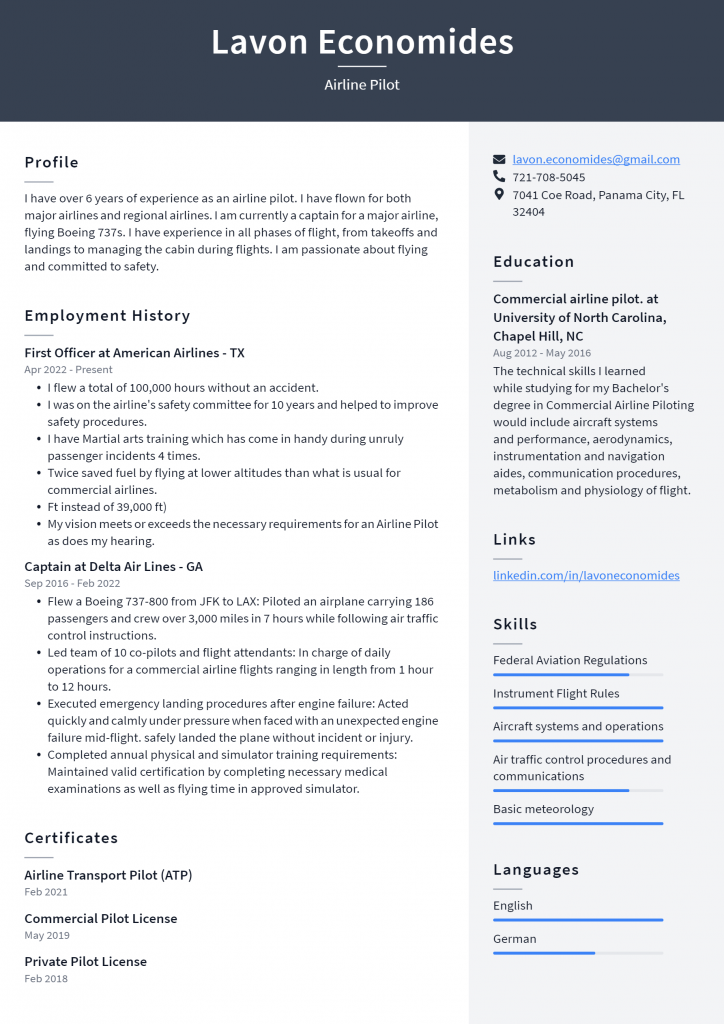
Download This Airline Pilot Resume as PDF
Captain Resume Example
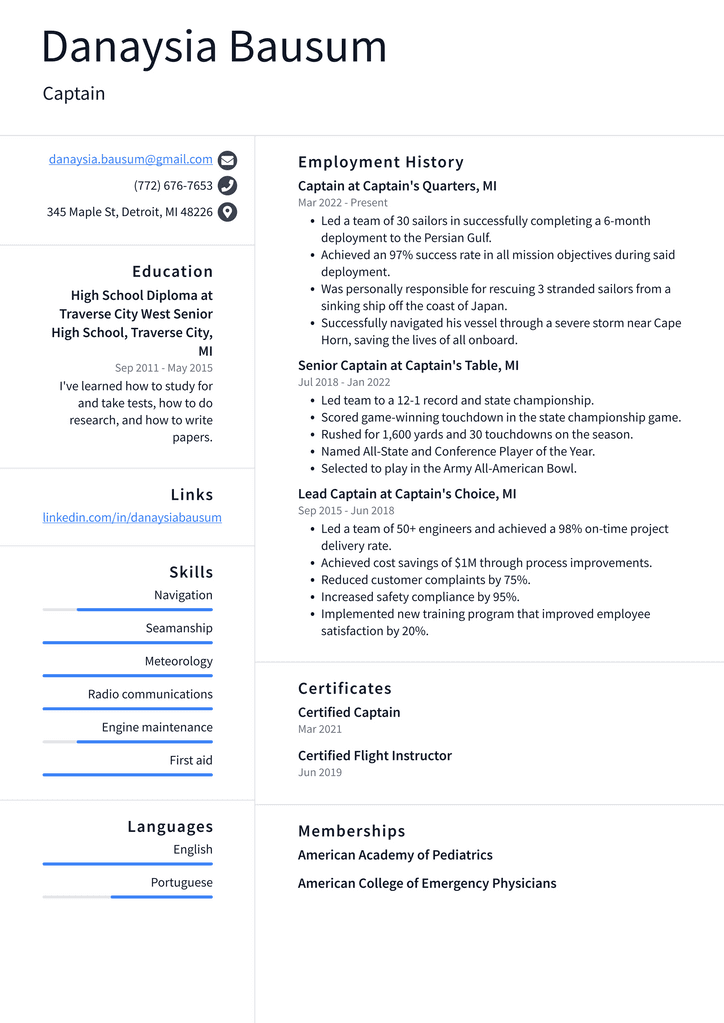
Download This Captain Resume as PDF
Flight Engineer Resume Example

Download This Flight Engineer Resume as PDF
First Officer Resume Example

Download This First Officer Resume as PDF
Second Officer Resume Example
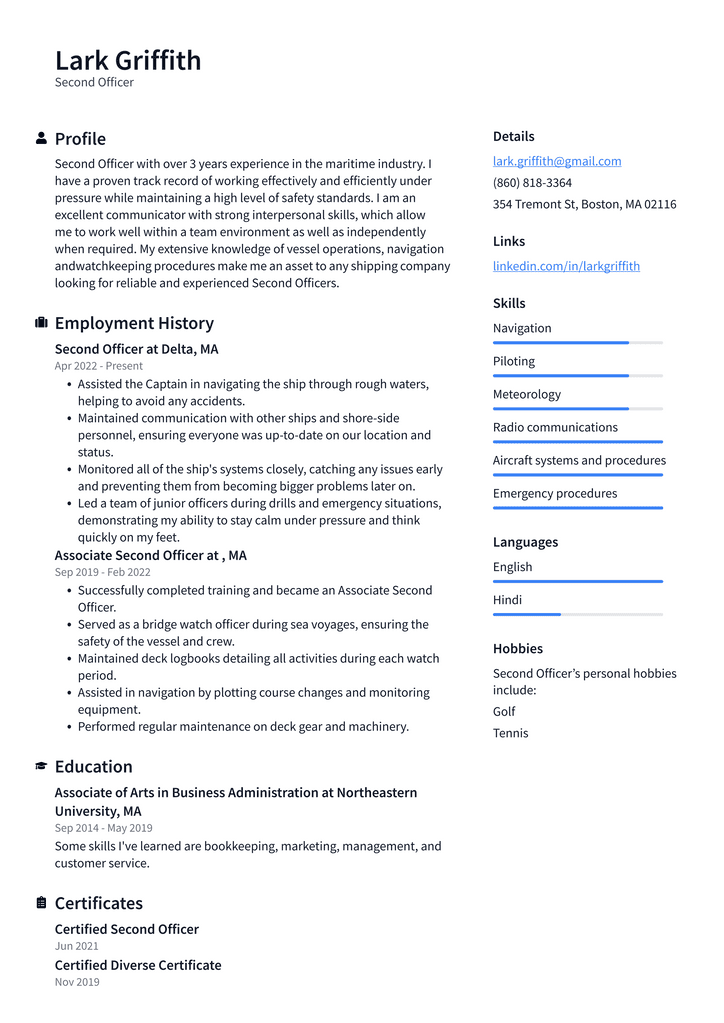
Download This Second Officer Resume as PDF
Check Pilot Resume Example
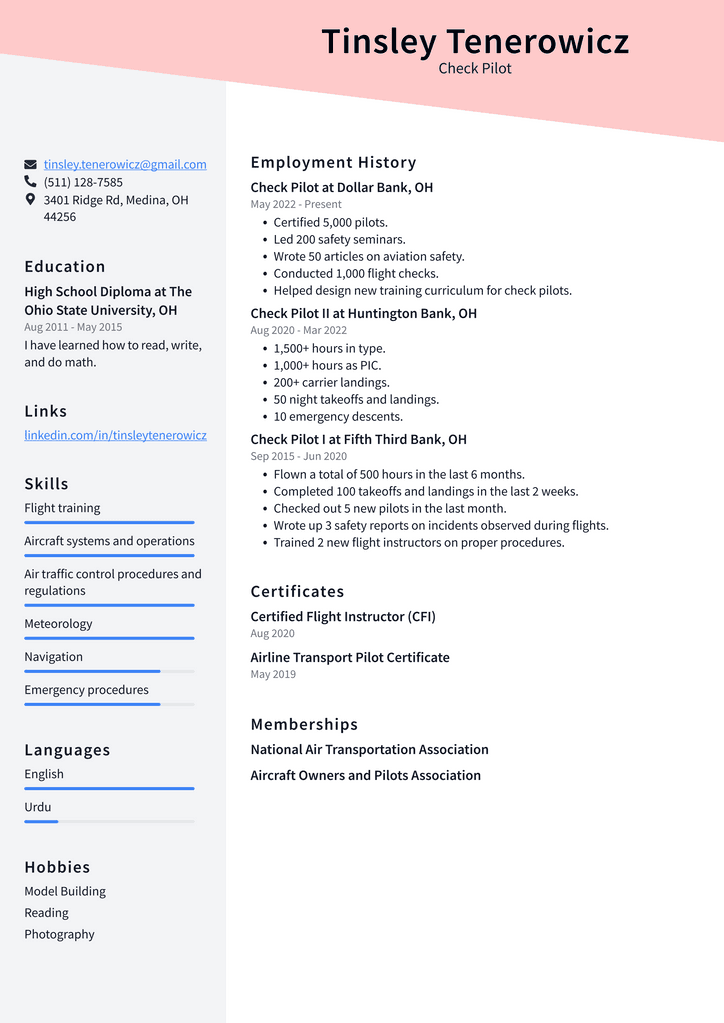
Download This Check Pilot Resume as PDF
Third Officer Resume Example
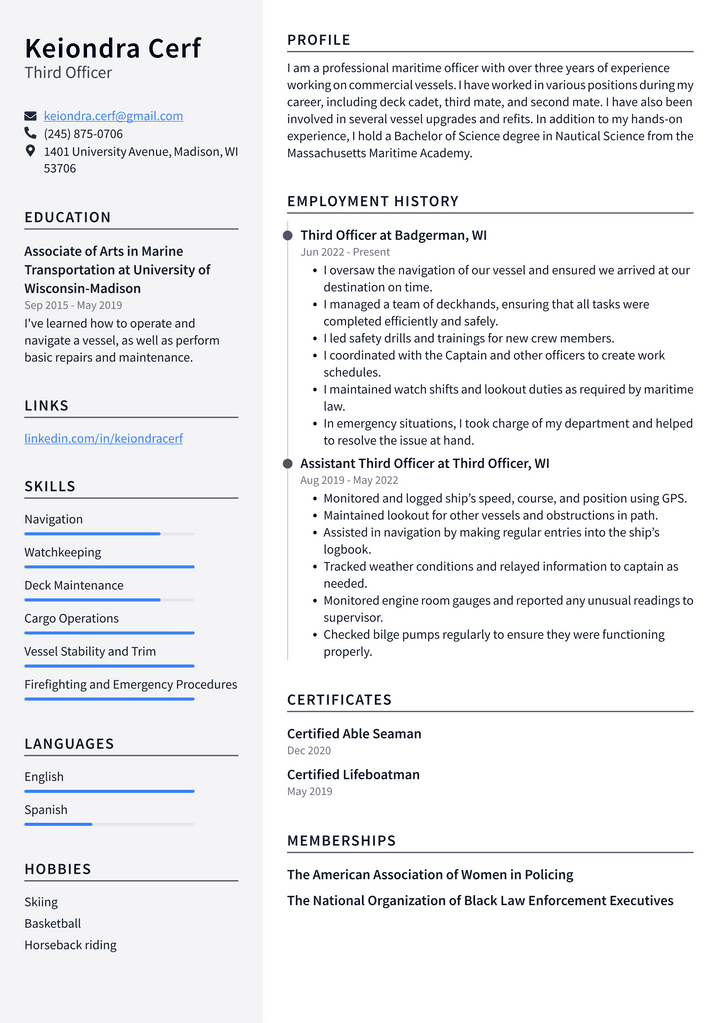
Download This Third Officer Resume as PDF
What to Include in an Airline Pilot Resume?
Before diving into the specifics of writing an airline pilot CV, let’s look at the minimum requirements for pilot resumes. These will help you understand what information hiring managers expect to see on your CV. – Education – At least your degree, type of degree, and expected date of graduation should be included. If you have completed any relevant courses or certifications, they should also be noted on your resume. – Licenses – Details of your pilot’s license, medical certificates, and ratings should be included on your CV. If you have other certificates or licenses that are relevant to the job, they should also be noted. – Awards and recognition – Any awards, recognitions, or achievements related to the job should be included on your resume. This is particularly important if you are applying for a management position. – Experience – Your experience in the piloting field (e.g., the type of work you did, the duration, and your position) should be included on your resume.
Font and Format of your resume for the airline pilot job
There is no definitive ‘right’ way to organize or format your resume, but there are a few guidelines that you can follow to help your CV stand out during the application process. When it comes to the font, you should always choose a readable font. – 10-12 point font – Although choosing the largest font on the page might be tempting, you should use a 10-12 point font. This makes your resume easy to read and ensures that the hiring managers don’t miss any essential information. – Non-Distracting Font – You should avoid using distracting fonts, such as Comic Sans or Papyrus. This only serves to make your resume look unprofessional. – One-Page Resume – Unless specified otherwise by the hiring manager, you should keep your resume to one page. This gives the hiring manager a clear idea of your experience and qualifications without them having to turn the page. – No Fancy Formatting – Fancy formattings, such as different colored fonts, fancy borders, and images, are best avoided unless the hiring manager specifically requested them.
Summary of Qualifications
The summary of qualifications is a two to a three-paragraph section at the beginning of your resume that describes your qualifications and experience. This is essential to your resume as it gives the hiring manager a quick snapshot of your knowledge, skills, and academic background. In addition, this is where you highlight your abilities and transfer them into company-relevant terms. For example, suppose you were applying for an airline pilot position and have significant experience with a specific aircraft type. In that case, you could state that you are proficient and qualified to fly a particular aircraft. This is also where you can add a few pilot endorsements and certifications if they are relevant to the job. A summary of qualifications is not required, but it can help you stand out from the crowd by highlighting your key strengths.
Academic Achievements and Recognition
Academic achievements and recognition can be essential to your resume, especially if you are applying for a management position. Including a summary of your academic achievements, such as a high GPA, honors, or scholarships, is a good idea. In addition, if you have received any awards or recognition for your academic achievements, you should include those as well. For example, if you graduated with honors from an aviation school and were presented with a special award, you could include that information on your resume. This demonstrates that you are dedicated to your field and have the potential to advance in your career as a pilot.
Professional Experience
The professional experience section is where you can discuss the piloting jobs you have held and any relevant training for the position you are applying for. It is important to note that you should avoid listing the dates of your employment in this section. Instead, focus on documenting your key responsibilities and the piloting-related tasks you completed during your career. For example, if you worked as a pilot at an airline, you could note the types of aircraft that you flew and the routes you passed them on. You could also note any pilot endorsements or certifications earned during this time. The professional experience section is also an excellent place to include any volunteer experience relevant to the job, such as the amount of time you volunteered at a hospital or organization.
Pilot Endorsements and Certifications
If you have earned pilot endorsements or certifications, you should include those in the pilot experience section of your resume. For example, if you have acquired an FAA Airline Transport Pilot (ATP) rating, you could include that information on your resume. This shows the hiring manager that you are qualified to fly large commercial aircraft. You could also list any other relevant pilot endorsements or certifications, such as an Aircraft Dispatcher rating or Aircraft Maintenance Engineer certification if they are related to the job you are applying for. However, it is essential to note that not all pilot endorsements and certificates are transferrable between the different types of jobs in the aviation industry.
Recent Employment
If you are currently employed, you should include your job title, employer name, and employment dates in the current employment section of your resume, as well as any pilot endorsements or certifications you have earned since starting your job. It is a good idea to keep this section short and only includes information relevant to the job you are applying for. For example, if you are currently employed and are applying for a job at an airline, you should avoid listing the airline as your current employer. Instead, you should note an unrelated company where you work.
Conclusion
As with all other aspects of your application, you should tailor your resume for the job you are applying for. While there is no one-size-fits-all resume, you should use the airline pilot resume example as a guide and adapt it to suit the job you are applying for. Remember to include your pilot endorsements, certifications, and any academic achievements and recognition. This will help you stand out from the crowd and increase your chances of getting an interview.